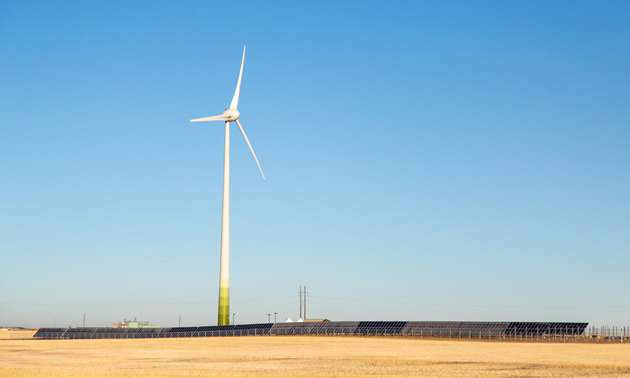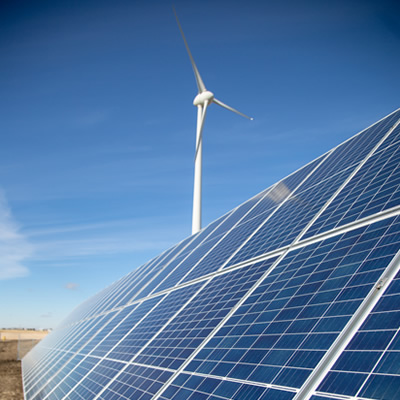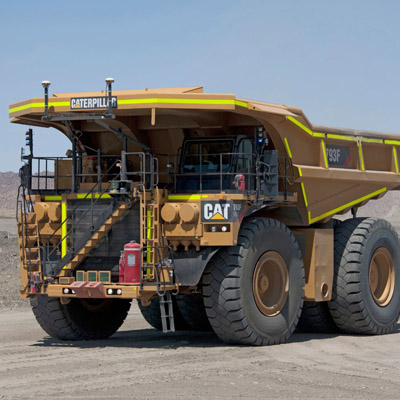A renewable triple: Canada’s first large-scale wind-solar-storage combo
Canada’s first large scale wind-solar-storage combo

Phase 1 of the Cowessess Renewable Energy Storage Facility consists of an 800-kW Enercon wind turbine and a 400-kW/744-kWh Saft lithium-ion battery system. — Photo courtesy Saskatchewan Research Council
The Saskatchewan Research Council (SRC) worked with the Cowessess First Nation to install 1,134 photovoltaic panels at the Cowessess Renewable Energy Storage Facility, a wind turbine and energy storage project in southern Saskatchewan. The addition of solar makes this hybrid wind-solar-storage project unique. SRC plans to monitor the facility’s performance and measure its capabilities over the next year.
Anton Farber, project manager and lead engineer, joined the project in construction of Phase 1, continuing through commissioning and demonstration, and now into Phase 2. Phase 1 of the facility is an 800-kW Enercon wind turbine and a 400-kW/744-kWh Saft lithium-ion battery system. The additional solar photovoltaic panels cover about one hectare of land at the site. “As part of the initial concept, there was always the idea of including additional renewables within the system,” Farber said. “Phase 2 is the realization of that initial vision and provisions made in Phase 1.”
The project contributes to the province’s climate change strategy while checking all the boxes for connecting to the grid. The synergy between solar and wind and the addition of battery takes advantage of two available renewable energy forms in Saskatchewan. Separately, the variability of both wind and solar make these energy sources usual suspects for hesitation. Together, and with the help of the battery, the variability is remedied and reliability increases.
Solving the storage challenge
Generally, storage is still a challenge for renewables like wind and solar. “We are working towards filling that need, but we don’t necessarily have that end game solution,” said Farber. “We are focusing on a couple of the areas that are challenges for renewable energy and using batteries to help with those challenges, but it won’t solve all storage needs for renewables.”

Phase 2 of the Cowessess Renewable Energy Storage Facility consists of 1,134 photovoltaic panels. — Photo courtesy Saskatchewan Research Council
For many in the renewable energy, the desire is to store mass amounts of energy. This facility takes a different approach for the storage challenge. “We are trying to make renewables more manageable from a grid perspective,” Farber said. The focus on storage isn’t only to stock up on power for a rainy, windless day, but also to smooth the output of power.
For example, the wind turbines can jump to excessive levels in only a few minutes, then dissipate just as quickly. The grid can’t afford power surges in either direction. “Our utility has stringent requirements to be met, so that led to challenges,” Farber said. The ability to store energy provides the ability to steady this stream of power allowing a consistent connection to the utility.
Research project attracts positive response
The Cowessess Renewable Energy Storage Facility has garnered quite a lot of interest since commissioning Phase 2. “Everyone is curious to see how it will perform,” Farber said. “The results of the study are still a year away, but everyone is excited to see these components working together in a single facility.” They are interested in how the batteries will benefit the system and increase the penetration of renewables into the energy grid.
Smoothing the stream of energy is the priority for the project right now. “We hope that the solar will complement the wind and assist in levelling the energy sources, as well as provide additional energy that will help maintain the state of charge in the batteries,” said Farber.
If successful, SRC hopes that other interested parties will build on what they learn, implementing their own storage solutions. “The facility itself has been highlighted as a research laboratory where others could come try different control algorithms and challenges to see how the battery and renewables work together in varying applications,” he said.
The challenges of batteries are quite diverse, so there are still plenty of areas to explore. “Ideally, people will come to our facility to look at other areas of challenge in electrical generation systems,” said Farber.




